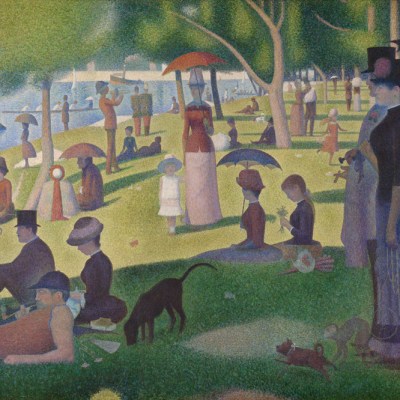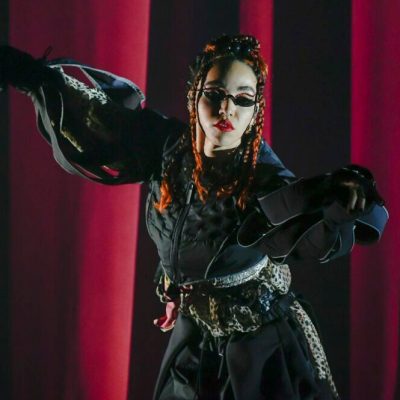Musicals have often had an uneasy relationship with being considered ‘art’. They are the glossy, popular side of theatre that draws in the crowds and (often) pays for the serious work. At least, that’s how they used to be. Broadway stars were always made in musicals. Nowadays the stars are made on screen and then they go on stage to prove their seriousness. This is a trend that was distilled about 30 years ago when the Almeida and the Donmar Warehouse in London built their names on rarer works from the European canon with Hollywood stars – Juliette Binoche in Pirandello’s Naked, for example, or Nicole Kidman in The Blue Room. Kidman went on to confirm her star power by appearing in Baz Luhrmann’s big-screen musical, Moulin Rouge, proving that there was life in the old genre yet.
Just in time for Christmas, the V&A has put on a display called ‘Re:Imagining Musicals’. The museum has gathered 100 objects to explore how musicals have evolved and, according to the wall text, to reveal ‘the ingenuity behind these productions’ inception’.
Cover of the original cast recording of The Wiz (1975). Courtesy Victoria and Albert Museum, London

The problem with exhibitions about musicals is that displaying all-singing, all-dancing moments is quite tricky and runs counter to most people’s expectations of an exhibition. All the objects in this display are static. Some are books that are kept in a museum case – origin stories, it seems, are there to be looked at but not read. It’s quite nice seeing a cartoon strip of Little Orphan Annie and nicer still to discover that the comic strip was inspired by the story of Mary Alice ‘Allie’ Smith; a typesetting error caused her to be rechristened ‘Annie’. But it’s a struggle to see how this moves beyond miscellaneous fact and into creating a hugely successful musical; it doesn’t point to the artistry that made Annie so important to its fans
In order to stretch beyond the limits of the museum podium and display case the first room has a soundtrack of designers being interviewed about the productions they have worked on. Christopher Oram, for example, talks about the importance of the Olaf puppet to represent the character in Frozen and how important he is for the emotional weight of the production. This is not uninteresting in and of itself, but it can be a bit confusing when you’re looking at a section about the reimagining of The Wizard of Oz that contains costumes from Wicked and The Wiz.
Costume worn by Kerry Ellis as Elphaba in Wicked at the Apollo Victoria Theatre in 2006 and designed by Susan Hilferty. Courtesy Victoria and Albert Museum, London; © Susan Hilferty

The curator, Simon Sladen, has organised the display around themes that unite seemingly disparate musicals, such as these two Wizard of Oz musicals or a section exploring musicals and war that compares Oh What a Lovely War with Miss Saigon. While it’s always exciting to be reminded of Oh What a Lovely War, I am not sure that the costumes show the breadth of imagination that went into making it such a standout triumph of theatrical art.
In the final room there is a montage of different clips of musicals, where you see – captured on film – what all the pieces in the preceding rooms have made possible. The research, props and costumes all work in synchronicity to create something greater than the sum of their parts. The imagination and the sweat of rehearsals create a whole new world on a stage that is transporting. The magic of musical theatre becomes, if not tangible, at least expressed.
The difficulty with this exhibition is that it is a collection of ephemera and the thing to which it alludes seems to slip through your fingers before you can grasp it. At its heart, the show asks how you display the workings of imagination, but, by focussing on the accessories of musical production it misses the point. If you carry on, however, and step beyond the gallery with the big cinema screen into the permanent display of theatre maquettes with designs for productions from Peter Brook’s revolutionary production of A Midsummer Night’s Dream or Leslie Hurry’s design for a one-man ballet of Hamlet danced by Robert Helpmann get closer to the excitement of theatrical imagination. The models are, largely, lifeless – abstractions of the final product – that stand as testaments to the inventiveness of their designers. They are just one part of the production that comes to life on stage, but even on their own they make their presence felt in a way that costumes, posters and album covers don’t.
‘Re:Imagining Musicals’ is at the Victoria and Albert Museum, London, until 27 November 2023.



